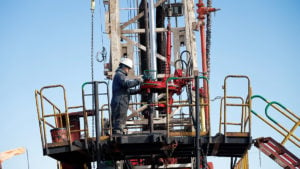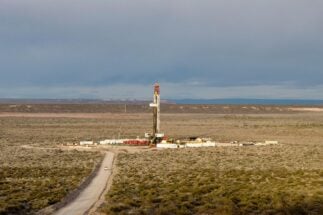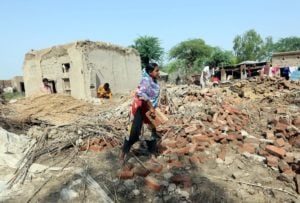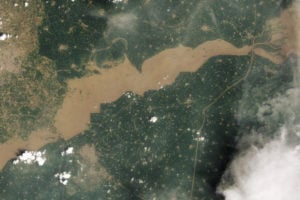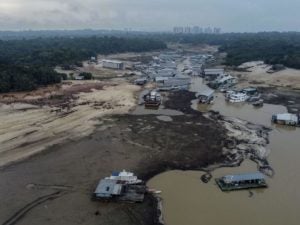On 10 August, a video of a line of trucks transporting five gigantic circular modules to the port of Shanghai, China, made headlines in Argentine media. The structures are two of the five turbines that will be installed in the Jorge Cepernic dam, one of two planned hydropower plants in the far south of Argentine Patagonia.
The footage brought the long-running project back to the forefront of the country’s news cycle. Together with the Néstor Kirchner dam, the Cepernic dam will comprise one of Argentina’s most ambitious engineering works in recent decades, but one of its most controversial, too, with their construction place taking on the Santa Cruz River – the only river in Argentina that has, until now, flowed unimpeded from the Andes to the Atlantic.
First conceived in the 1950s, the two dams were officially launched in 2008 but have had a rocky journey, with construction only getting off the ground in 2015 and a series of obstacles disrupting works in the years since.
The Néstor Kirchner dam, also known as the Condor Cliff dam, is planned to reach 73 metres in height, crossing the river 180 km west of the city of Puerto Santa Cruz, while the 41-metre Jorge Cepernic dam, also known as La Barrancosa, will sit 65 km downstream. Together, the water held back behind them will cover some 47,000 hectares of what is a cold, windy plateau with little rainfall, but one still rich in plant and animal life.
The companies in charge of the project – Chinese construction firm Gezhouba Group, which reportedly owns 70% of the shares, and the Argentine companies Eling (20% stake) and Hidrocuyo (10%) – say that the hydropower plants will provide multiple benefits including renewable energy, reduced imports of fossil fuels, a 15% increase in Argentina’s hydropower generation, and job creation.
Despite this, the project has long faced opposition, with doubts from some commentators over its promised benefits and potential impacts on the surrounding environment, in disputes that are still unresolved.
The first agreements and international tender for the works came in 2007 and 2008, during the governments of Néstor Kirchner and Cristina Fernández de Kirchner, but even now the project is under discussion in the country’s supreme court, which must decide on a series of lawsuits seeking to prevent the dams from continuing – despite works already being over a quarter of the way towards completion.

Santa Cruz, a delicate environment
The basin of the Santa Cruz River covers some 25,000 km2 across the province of the same name, finding its source from two large, glacier-fed lakes, the Argentino and the Viedma. A significant number of glaciers together occupy 40% of the basin’s surface area and form part of the Southern Patagonian Ice Field, the third largest ice reserve on the planet after Antarctica and Greenland.
Experts suggest that changing dynamics in this ice system are likely to pose questions around safety and capacity for the Kirchner and Cepernic dams, with the potential for increased volumes of water flowing downstream towards them.
A recent study determined that the Perito Moreno glacier, around 170 km west of the Kirchner dam, and the most famous and frequently visited of these icy masses, has suffered a retreat due to landslides over the Argentino lake – a reversal in trend for a glacier previously observed to be advancing. Some scientists estimate the loss between 2020 and 2022 to be around 300 metres, though others extend this to 700 metres. This “could indicate that it is experiencing some vulnerability,” says Gabriela Lenzano, a researcher at the Argentine Institute of Snow Research, Glaciology and Environmental Sciences (IANIGLA).
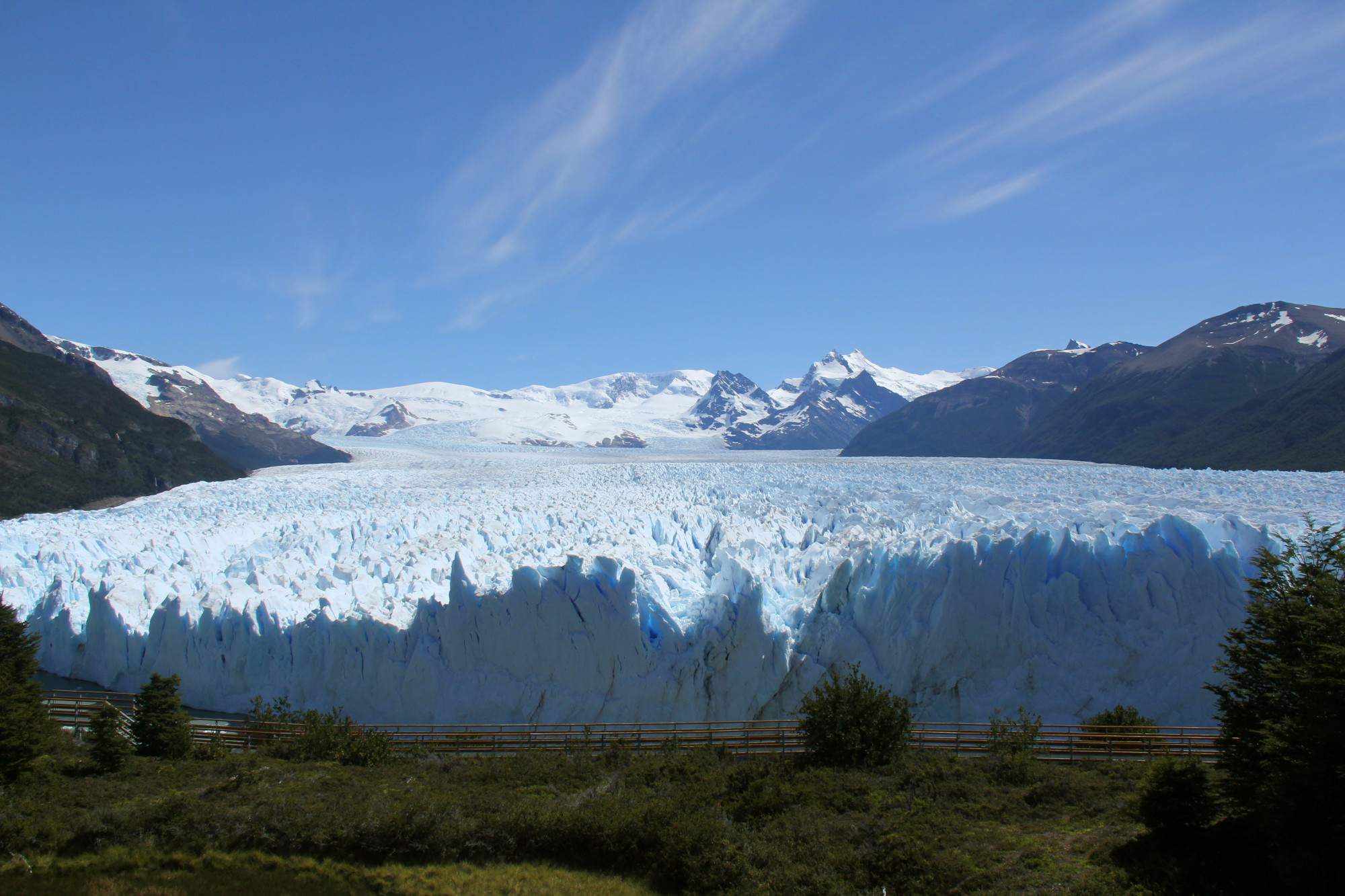
However, the problem goes beyond just Perito Moreno, Lenzano adds: “Ice loss on 28 glaciers in the Santa Cruz basin was [on average] 1.44 metres per year between 1978 and 2018. Since 2015, the retreat of the Viedma glacier has been alarming, with average speeds of 3.5 metres per day and a frontal ice loss of 2.5 square kilometres in the last seven years, equivalent to what was lost in the previous 50 years.”
Guillermo Tamburini is a geographer, glaciologist and cartographer who has studied the area where the dams are being built. He believes that there has not been sufficient analysis of the effects on the river’s fluvial regime from accelerated melting – driven by rising average temperatures amid climate change – and consequently on the performance of the dams: “It is not clear what the water dynamics will be in this process of global warming and accelerated melting. It is also unclear what catastrophic events may occur.”
While Lenzano points out that “to analyse a climate-driven change in the flow regime of a stream, you have to have a dataset of about two decades”. Tamburini is alarmed by the possibility of a “a tragic combination of factors” that could ultimately pose risks to the dam’s structures, to people and the environment in its area of influence.
Environmental impacts
The latest findings related to the changing dynamics of the glaciers have brought up once more the events of 2016, when Argentina’s supreme court interrupted the works only a year after they had started, due to the shortcomings detected in its 2014 environmental impact study. “That initial study included amateurish considerations, considering the magnitude of the work,” says Hernán Casañas, executive director of Aves Argentinas, an NGO dedicated to conservation and bird protection.
The supreme court then asked different national bodies to prepare reports that would provide more details on issues such as the type of soil on which the dams were being built, the level of seismic activity in the area, or the possible effects the projects could have on lakes and glaciers, as well as the preparation of a new environmental impact study.
There were not enough studies to start the project or to put it into operationSofía Nemenmann, Argentinean Association of Environmental Lawyers
Sofía Nemenmann, a lawyer with the Argentinean Association of Environmental Lawyers recalls that INPRES, the national body advising on seismic activity, was “concise” in its advice: “It said that there were not enough studies to start the project or to put it into operation.”
In 2018, a landslide forced work on the Kirchner dam to come to a halt. “The problem is that it is located in an area where the rocks are too soft to support the anchoring of the dam walls,” explains Tamburini. “If they become saturated with water, the soil dissolves and can break.” The accident led to a redesign of the dam, with its maximum height, the number of turbines to be installed and the amount of power to be generated reduced.
Fears around the effects from seismic activity intensified in October 2021, when a 5.5-magnitude earthquake struck the area of El Calafate, the closest city to the Perito Moreno glacier and some 130 kilometres away from the Néstor Kirchner dam. However, no impacts on the dam works were recorded.
Environmental organisations say the dams have already caused a long list of damages to the biodiversity and ecosystems in this corner of Patagonia. María Marta Di Paola, an economist and environmental consultant, lists them: “Degradation and disappearance of aquatic and surrounding systems, increased river erosion, effects on the quality and health of water, decomposition of biomass and flooded soils, increased methane emissions [from reservoirs] and effects on carbon sinks.”
Manuel Jaramillo, general director of Fundación Vida Silvestre, an Argentina NGO, adds a specific detail: “The dams will impact 192 km of a river whose banks will be flooded, leaving under water an area that is approximately twice the size of the city of Buenos Aires. Imagine the amount of animal and plant life that will be lost in this procedure alone.”
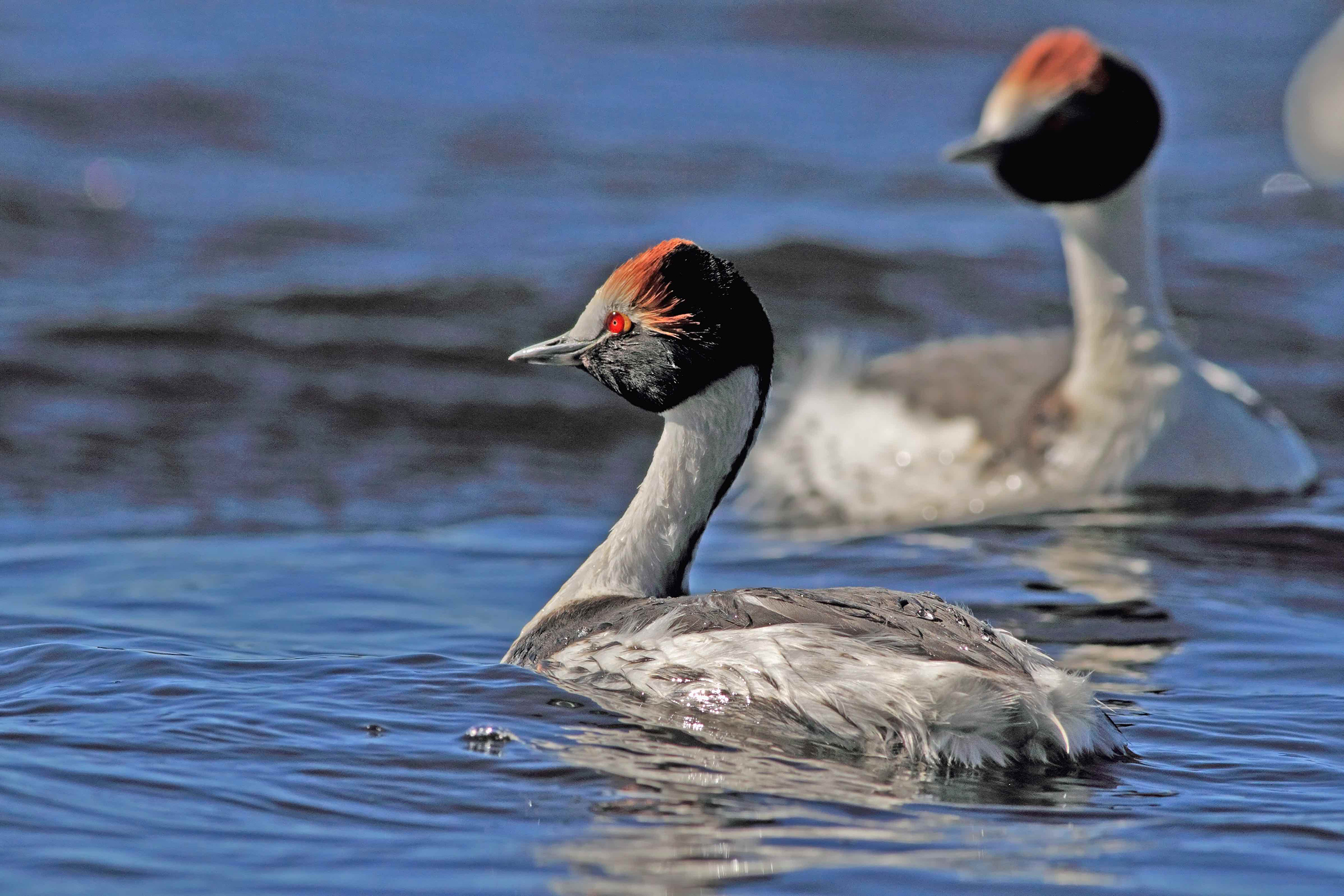
Specialists consulted by Diálogo Chino also spoke of threats from the dams and a 170-kilometre power line to connect them to the national electricity grid, which could lead to the extinction of emblematic bird species such as the hooded grebe (Podiceps gallardoi) and the ruddy-headed goose (Chloephaga rubidiceps).
The former is an endemic bird that only inhabits the rivers of Santa Cruz and is in danger of extinction, while the ruddy-headed goose was listed as an endangered species in Argentina in the 2017 report submitted by the National Parks Administration as part of investigations following the supreme court suspension of the dam works. Collisions with high-voltage cables can cause death for these birds.
Elsewhere, the Indigenous communities that inhabit the region, mainly Mapuche, are concerned for formations that will be submerged by the planned reservoirs: around 170 archaeological sites, of which only around 30 could reportedly be saved from destruction. “Unlike social movements that were initially very opposed to the construction of the dams but has become diluted over the years, the Indigenous peoples continue to discuss the cultural and social impact that the dams will cause,” says Kini Roesler, a biologist and coordinator of the Patagonia programme for Aves Argentinas.
In 2017, the Mapuche-Tehuelche community Lof Fem Mapu, who live in the district of Corpen Aike, where the estuary of the Santa Cruz River is located, sued the provincial and national governments for the “damage to cultural, archaeological, landscape and historical heritage” that they believe the dams will cause on their lands, and asked to be consulted on the continuation of the works. The case has yet to reach a conclusion.

The projects’ backers have sought to address these concerns, but have been met largely with continued criticism. The consortium of companies behind the works maintains that all its activities are being carried out “with respect for the environment, biodiversity and the protection of natural resources.” An updated environmental impact study was released in 2017, but was questioned by researchers for not sufficiently considering the impact on glaciers.
In March 2018, Diego Moreno, then national secretary of environmental policy, climate change and sustainable development, said that the project “foresees extensive compensation measures, based on the area and habitats that would be lost and on the evaluation of the ecosystemic value of these sites.” However, the ensuing environmental compensation plan for the project’s non-mitigable impacts was strongly criticised by NGOs.
The scale of the project
The two dams that will make up the Santa Cruz River complex are expected to have a joint installed capacity of 1,310 megawatts – a volume that exceeds the needs of the 330,000 inhabitants of Santa Cruz province, which also has three wind farms that produce around 12% of all wind power in Argentina.
Tamburini raises doubts over the logic and necessity of the dam projects, pointing to other investments that could be of a higher priority. “Argentina loses almost 14% of its of electricity due to deficiencies in its distribution network, when the normal rate would be below 10%,” he says. “They announce that dams would produce 5% of the country’s total energy. If this is the case, why hasn’t much less money been invested in fixing a deficient grid than in building new plants?”
Diálogo Chino approached the companies involved in the dam projects for comment on this issues and others related to them, but no responses were received.
“It was never an urgent energy project, it is not a priority at the national level,” says Sofía Namenmann. A 2006 study by the energy thinktank Instituto General Mosconi evaluated 30 hydroelectric projects in the country, taking into account aspects such as economic profitability, technical and environmental aspects. The Néstor Kirchner and Jorge Cepernic dams were ranked eleventh and nineteenth in merit respectively, casting doubt on their levels of importance and technical viability.
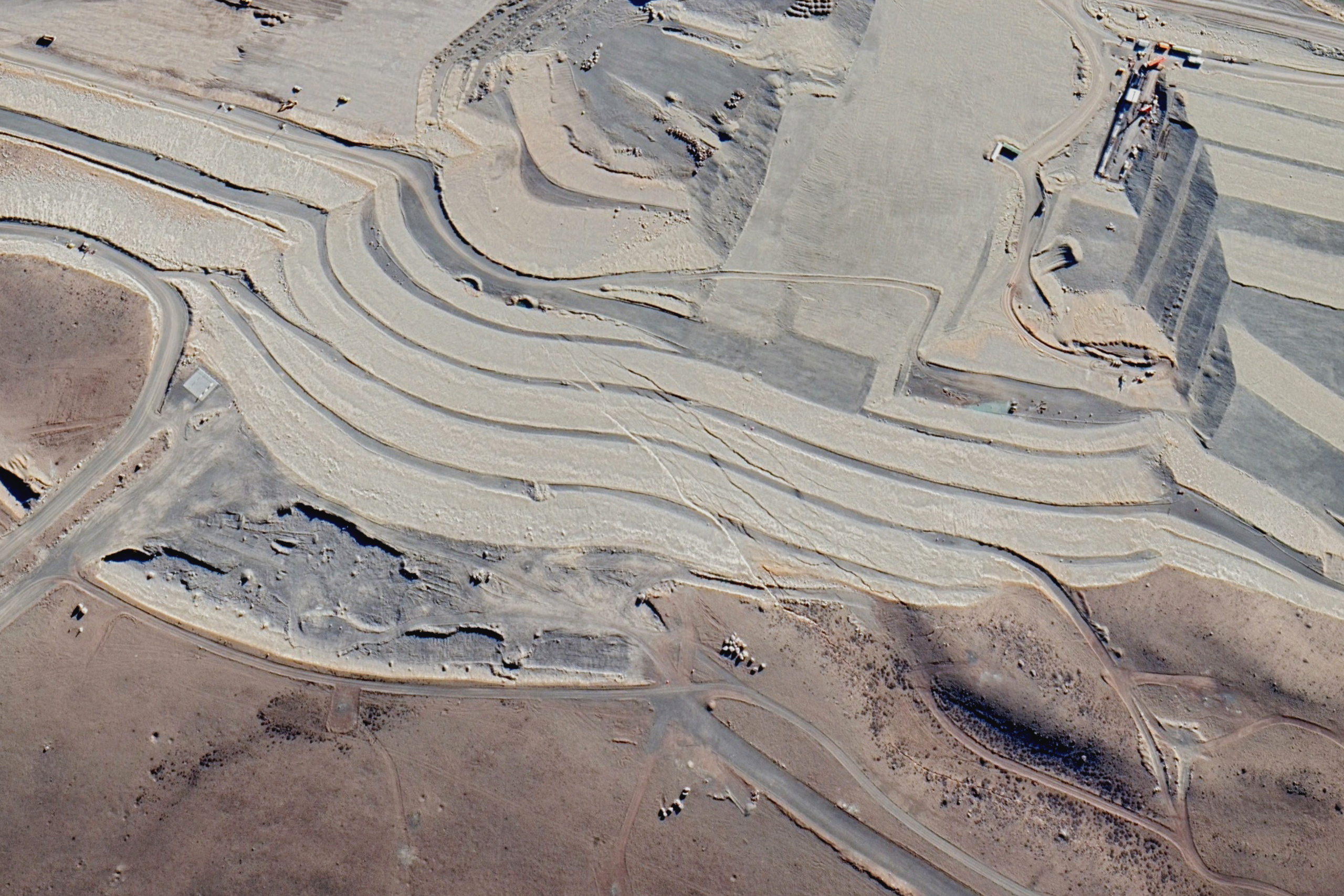
However, with the exception of a few interruptions – such as following the discovery of cracks in the walls of the Kirchner dam in 2018, or pauses in funding from Chinese banks to the Argentine state – works at the sites have never been fully halted. “On this issue, a political rift does not exist,” says Cristian Fernández, a lawyer and coordinator of the legal affairs department of the Environment and Natural Resources Foundation (FARN), an Argentine NGO. “Whoever the next president is, my feeling is that the work will continue.”
Far-right libertarian Javier Milei, who will contest a run-off for the presidency against current economy minister Sergio Massa on 19 November, has expressed his opposition to doing business with countries he considers “communist”, such as China or Russia.
Despite this, representatives of the organisations that have fought most strongly against the dams see little chance of preventing their construction. “Only technical and economic unfeasibility can stop them,” Jaramillo says.
“It has been a struggle between David and Goliath and the feeling, unfortunately, is that the battle has been lost,” says Casañas.
The initial target for the dams to enter operation was between 2021 and 2023, but it is now estimated that completion, including the filling of the lakes, will occur in 2027 or 2028.
A 2014 study by Oxford University analysed the construction of 245 large dams globally over 70 years, finding that their implementation on average took 44% longer than the originally estimated timeframe. In the case of Santa Cruz, the delay is double that.
Energía Argentina, the public company that monitors the progress of the works, reports that work on the Néstor Kirchner dam, located upstream, is currently 25% complete, while work on the Jorge Cepernic dam is 40% complete.
The most controversial and conflictive hydroelectric projects ever undertaken in Argentina continue to move forward against the winds of southern Patagonia and the tides of protests. Amidst all this, the turbines that were shipped in August from Shanghai already arrived at the calm waters of the winding Santa Cruz River.


